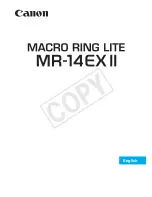
92
Appendix D: The Sensor Window
Appendix D: The Sensor
Window
Cleaning and Protecting Against Dust, Oil, and Scratches
The sensor window is part of the optical path and should be handled like other optical
components, with extreme care. Dust can obscure pixels, producing dark patches on the
sensor response. Dust is most visible when the illumination is collimated. The dark patches
shift position as the angle of illumination changes. Dust is normally not visible when the
sensor is positioned at the exit port of an integrating sphere, where the illumination is
diffuse. Dust can normally be removed by blowing the window surface using an ionized air
gun. Oil is usually introduced during handling. Touching the surface of the window
barehanded will leave oily residues. Using rubber fingercots and rubber gloves can prevent
contamination. However, the friction between rubber and the window may produce
electrostatic charge that may damage the sensor. To avoid ESD damage and to avoid
introducing oily residues, avoid touching the sensor. Scratches diffract incident
illumination. When exposed to uniform illumination, a sensor with a scratched window will
normally have brighter pixels adjacent to darker pixels. The location of these pixels will
change with the angle of illumination.
An important note on window blemishes:
When flat field correction is performed, window cleanliness is paramount. The figure below
shows an example of what can happen if a blemish is present on the sensor window when
flat field correction is performed. The blemish will cast a shadow on the wafer. FFC will
compensate for this shadow by increasing the gain. Essentially FFC will create a white spot
to compensate for the dark spot (shadow). As long as the angle of the incident light remains
unchanged then FFC works well. However when the angle of incidence changes significantly
(i.e. when a lens is added) then the shadow will shift and FFC will makes things worse by
not correcting the new shadow (dark spot) and overcorrecting where the shadow used to be
(white spot). While the dark spot can be potentially cleaned, the white spot is an FFC
artifact that can only be corrected by another FFC calibration.






































